The Japanese tea ceremony, known as Cha-no-yu or Chanoyu, is a cultural practice deeply rooted in Zen philosophy. It is a highly choreographed and contemplative ritual that extends far beyond the mere preparation and consumption of tea. Cha-no-yu represents a harmonious integration of art, aesthetics, and spirituality, allowing participants to find profound meaning in even the most mundane of activities. In this article, we will explore the history and philosophy of the Japanese tea ceremony, the significance of each tea ceremony element, and the role of mindfulness in tea preparation and consumption.
The History and Philosophy of the Japanese Tea Ceremony
The history of the Japanese tea ceremony can be traced back to the 9th century when tea was first introduced to Japan by Chinese monks. However, it wasn’t until the 16th century, during the Azuchi-Momoyama period, that the practice evolved into a formalized ritual under the influence of Zen Buddhism. Sen no Rikyu, a tea master and pivotal figure in the development of Cha-no-yu, played a significant role in shaping the way the ceremony is practiced today.
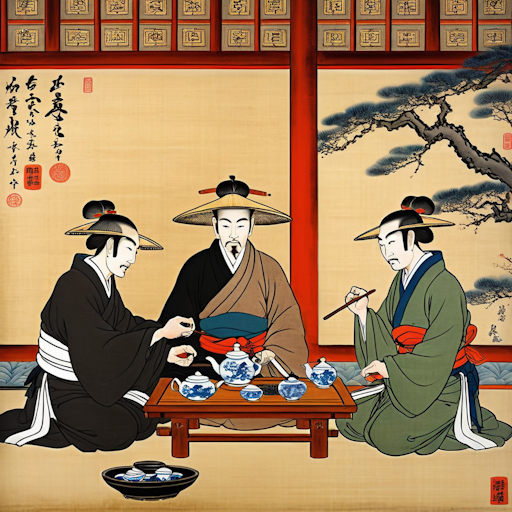
The Japanese tea ceremony in Zen is built upon the fundamental concept of wabi-sabi, which celebrates imperfection, simplicity, and transience. It emphasizes the beauty of the imperfect, the fleeting nature of life, and the serenity found in the present moment. Wabi-sabi is central to Zen philosophy, promoting mindfulness, appreciation of the ordinary, and an awareness of the impermanence of all things.
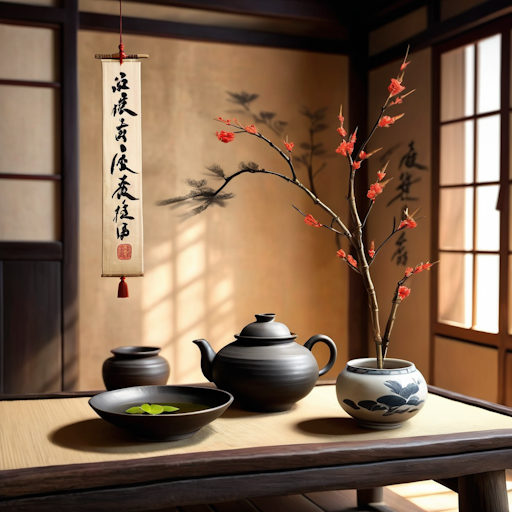
In the context of Cha-no-yu, this philosophy is reflected in the design and elements of the tea room, the utensils used, and the behaviour of both the host and the guests. The ceremony seeks to create an environment in which participants can experience a profound sense of tranquillity and connection with the universe. This connection is rooted in the belief that, in the simplest of actions, such as making and sharing tea, one can touch the essence of life and the universe.
The Significance of Each Tea Ceremony Element
The Japanese tea ceremony is a meticulously choreographed performance where each element holds profound significance. These elements include the tea room, the utensils, the tea, and even the movements and behavior of the participants. Let’s explore the meaning behind these components:
- The Tea Room: The tea room, known as a chashitsu, is designed with wabi-sabi principles in mind. It is a small, simple, and tranquil space that allows participants to leave the outside world behind. The design and layout of the tea room are intentional, creating a sense of balance and harmony.
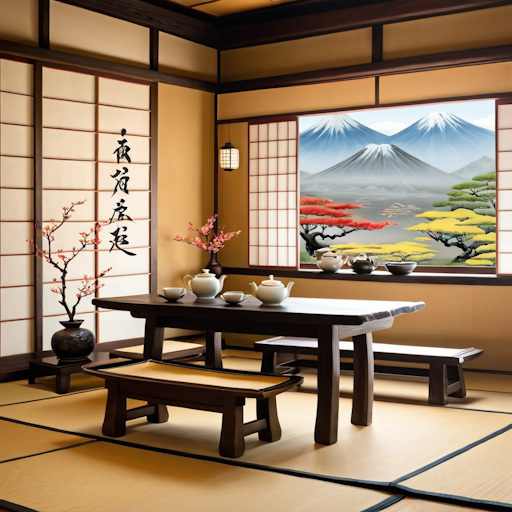
- Utensils (Chadogu): The choice of utensils in Cha-no-yu is essential. Each utensil, whether it’s a tea bowl, tea scoop, or bamboo whisk, is carefully selected for its aesthetic qualities and functionality. These utensils are often cherished for their uniqueness and imperfections, adding to the charm of wabi-sabi.
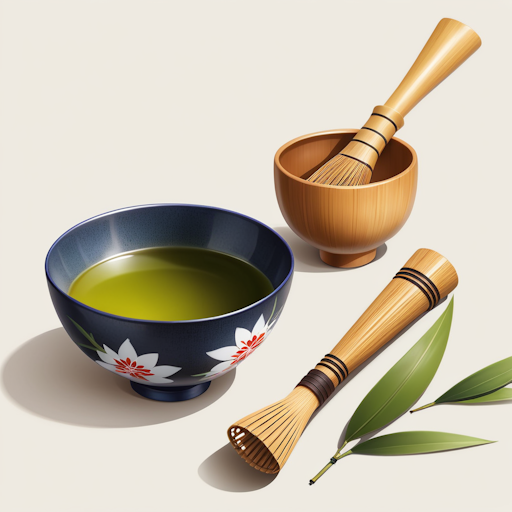
- The Tea: The type of tea used in the ceremony is matcha, a finely ground green tea. Matcha is prepared by whisking it with hot water until it forms a frothy, vibrant green liquid. The process of making matcha is seen as a form of meditation, requiring focused attention and precision.
- Movements and Behaviour: The movements of the host and guests during the ceremony are highly choreographed. Every gesture, from bowing to the placement of the utensils, is imbued with meaning. The silence and simplicity of these actions are intended to foster mindfulness and deep connection to the present moment.
Mindful Tea Preparation and Consumption
One of the key aspects of the Japanese tea ceremony is the practice of mindfulness. Mindfulness in Cha-no-yu involves being fully present and engaged in every aspect of tea preparation and consumption. Here’s how mindfulness is cultivated in the tea ceremony:
- Preparation: The process of making tea is meticulous and deliberate. Each step, from measuring the tea to whisking it with hot water, is performed with utmost attention and care. The act of preparing tea becomes a form of meditation, allowing participants to let go of distractions and immerse themselves in the task at hand.
- Serving: When the host serves the tea to the guests, it is a moment of profound connection. The guest receives the tea with gratitude and respect, acknowledging the effort and intention put into its preparation. This exchange symbolizes harmony and mutual understanding.
- Consumption: As guests sip the tea, they do so with mindfulness, savouring each sip and appreciating the flavours and textures of the matcha. The quiet and serene atmosphere in the tea room encourages contemplation and reflection.
- Silence: Silence is a crucial element of the Japanese tea ceremony. It allows participants to focus on the moment, connect with their inner selves, and engage in contemplation without the distractions of conversation.
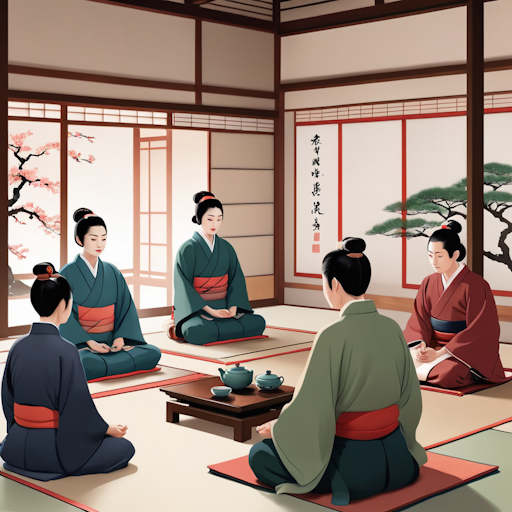
The mindful nature of Cha-no-yu allows participants to experience a deep sense of presence, tranquillity, and interconnectedness. It fosters an appreciation for the beauty of simplicity and imperfection, in line with the principles of wabi-sabi. This profound sense of mindfulness is central to the practice and philosophy of the Japanese tea ceremony in Zen.
In conclusion, the Japanese tea ceremony, deeply influenced by Zen philosophy, represents a harmonious fusion of art, aesthetics, and spirituality. It celebrates the beauty of imperfection, simplicity, and the present moment through the principles of wabi-sabi. The ceremony’s elements, including the tea room, utensils, tea, and behavior, all hold profound significance, contributing to the creation of a tranquil and mindful atmosphere. Cha-no-yu encourages participants to cultivate mindfulness in tea preparation and consumption, fostering a deep connection to the present moment and the universe.
External Links:
These external resources provide additional information and insights into the history and practice of the Japanese tea ceremony in Zen, offering a deeper understanding of this culturally significant tradition.